

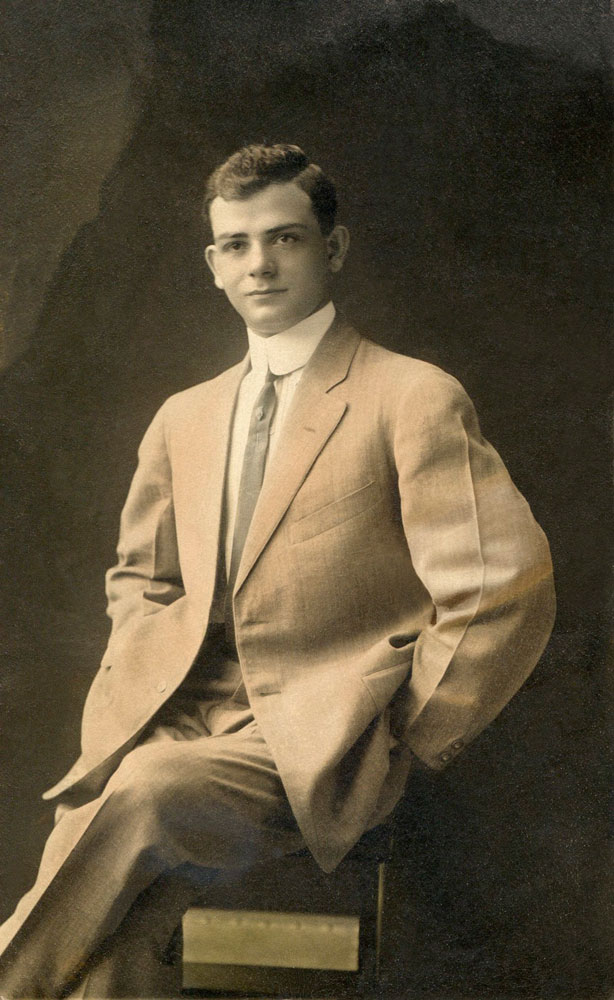
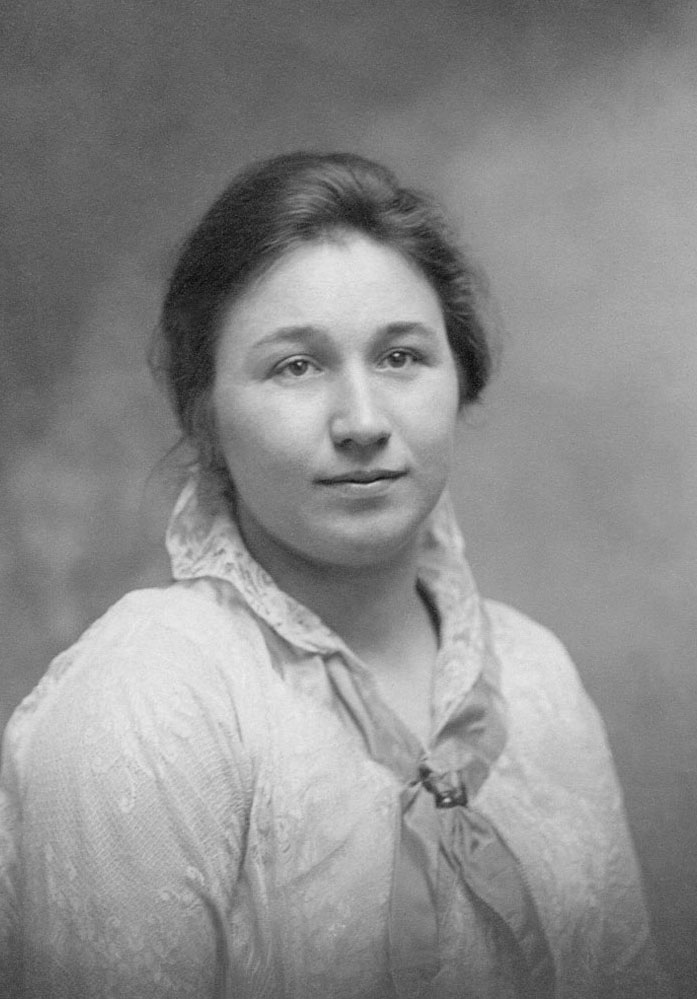
Mike 1922 Laura 1933
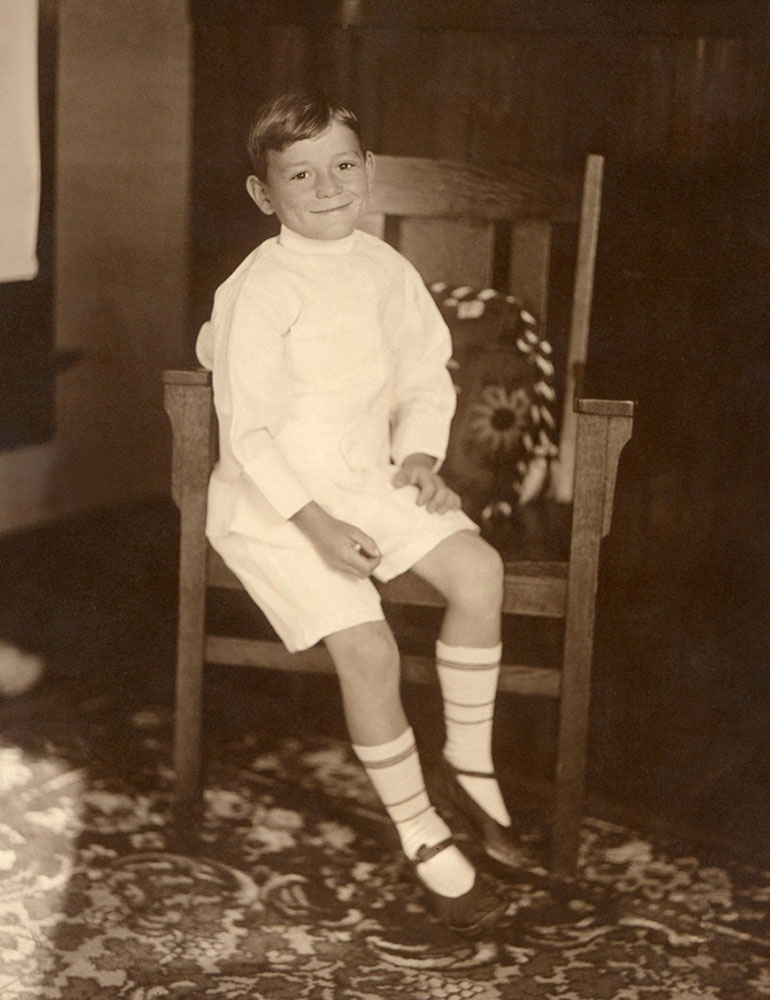
Atlee 1918
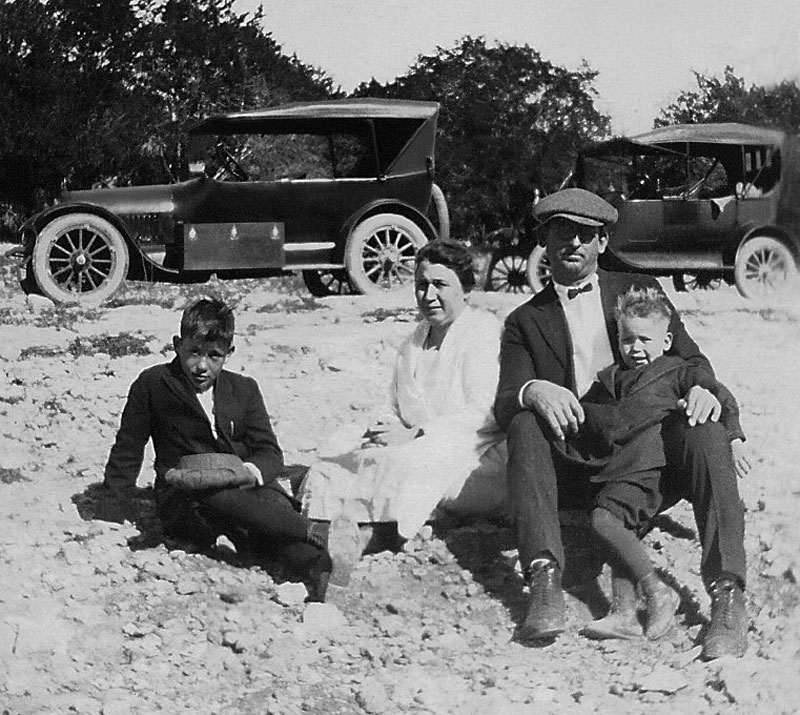
Atlee, Laura, John, and Atlee's brother Alois 1922
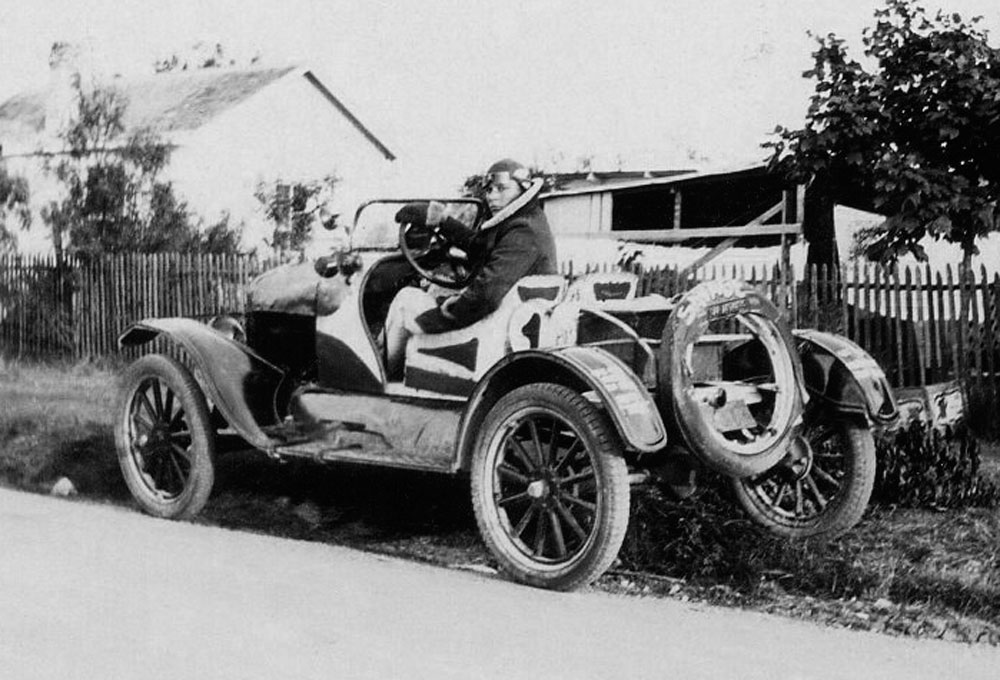
In front of the Halbardier house at 521 McLeary St in San Antonio
In 1933 he joined the Civilian Conservation Corps, the "Tree Army", a federally funded depression-era job program that offered full time employment for young men building roads and planting trees in national parks and forests and other public lands. He worked for thirty dollars a month at CCC Camp F-17-N in the Lincoln National Forest near Carrizozo in the mountains of south-central New Mexico, and later at a camp in the Medicine Bow National Forest in southeastern Wyoming.
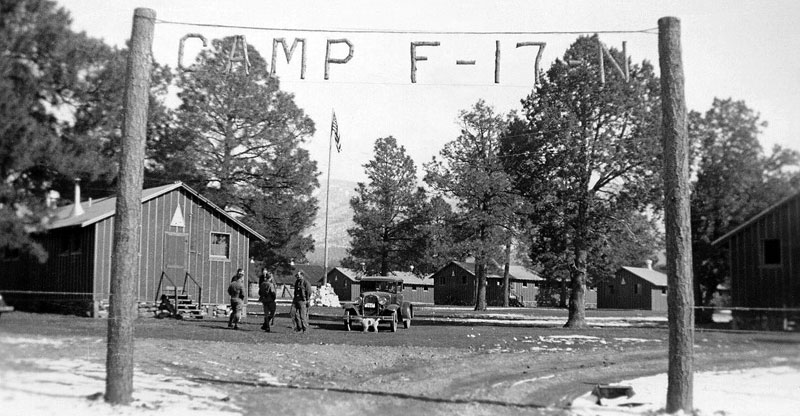
After spring semester 1936 he transferred back to the University of Texas where he continued to study Geology, earning his way with drafting and surveying jobs. He graduated with honors in 1938.
After college he found a position as a petroleum geologist where he spent his working days looking for oil. There are geological formations in Texas that bear his name.
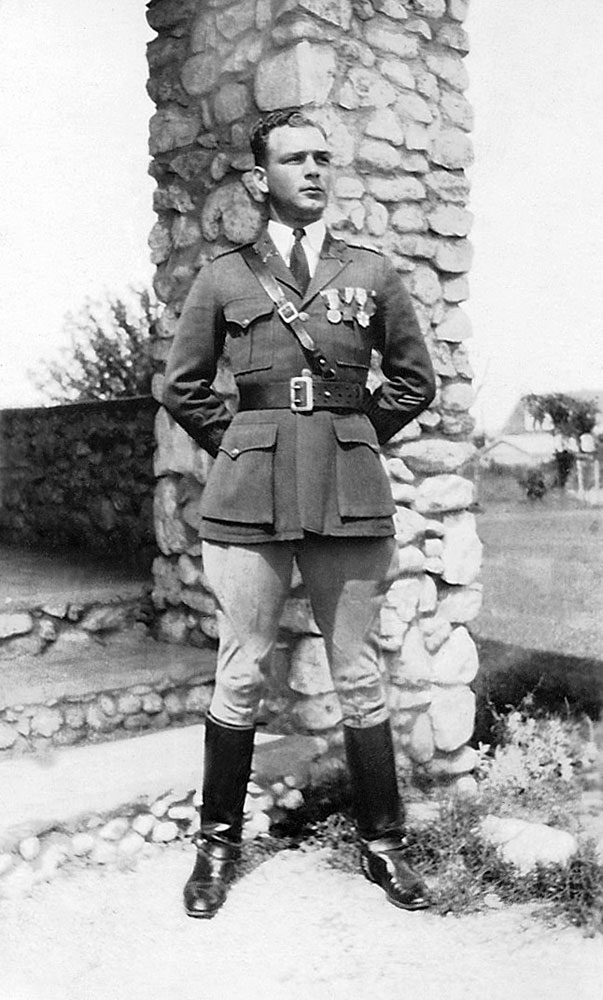
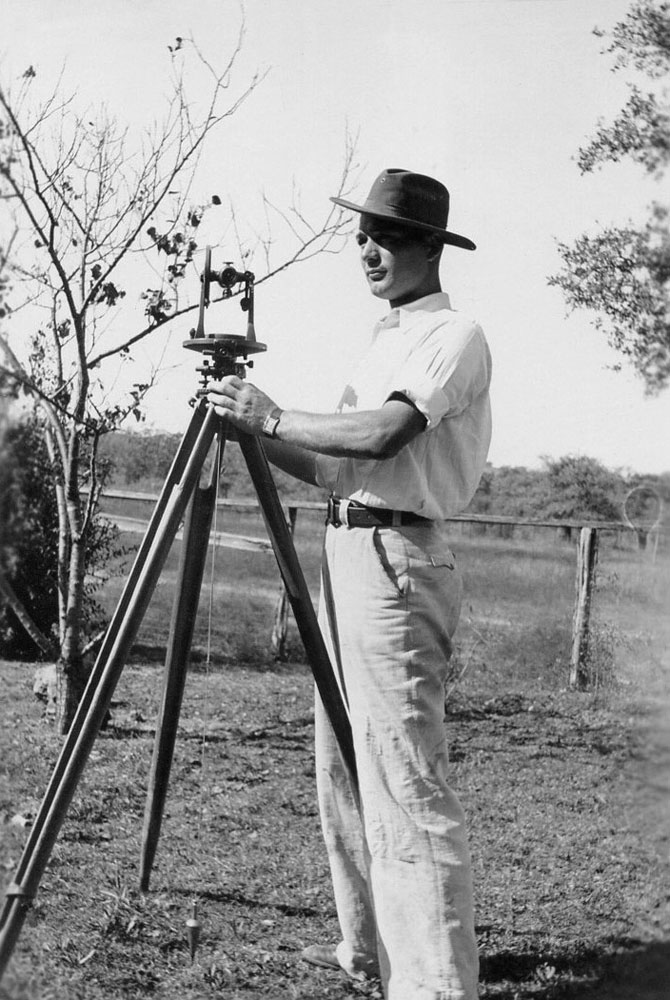
St Mary's ROTC 1934/36 Surveying 1930's
He completed his training at Randolph Field and Kelly Field in San Antonio, and in March of 1942 was commissioned as second lieutenant and assigned to Waco Army Air Field as flight instructor with his two best friends, Alva Murphy and Daniel "Stretch" McKinnon.
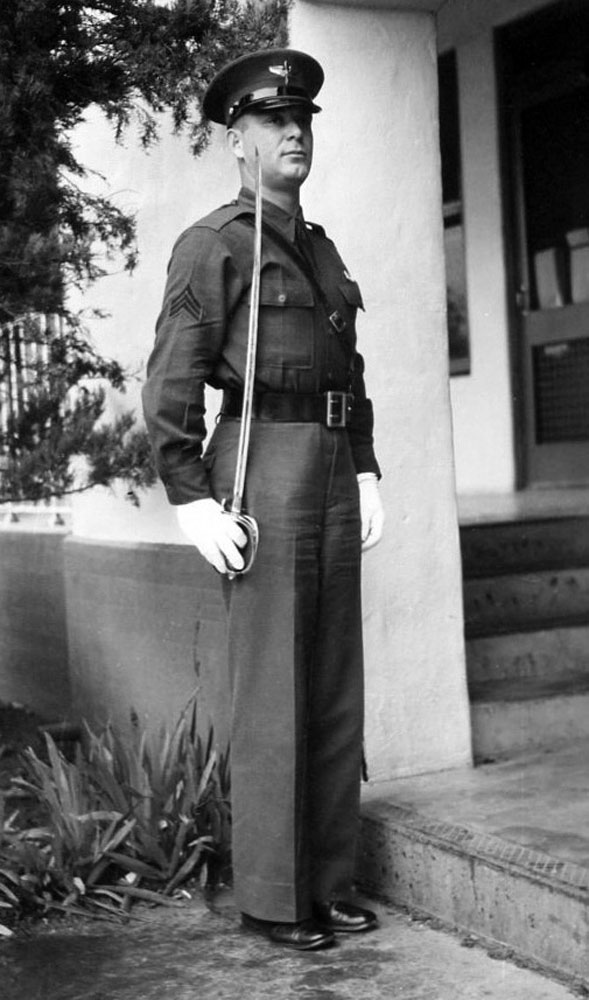
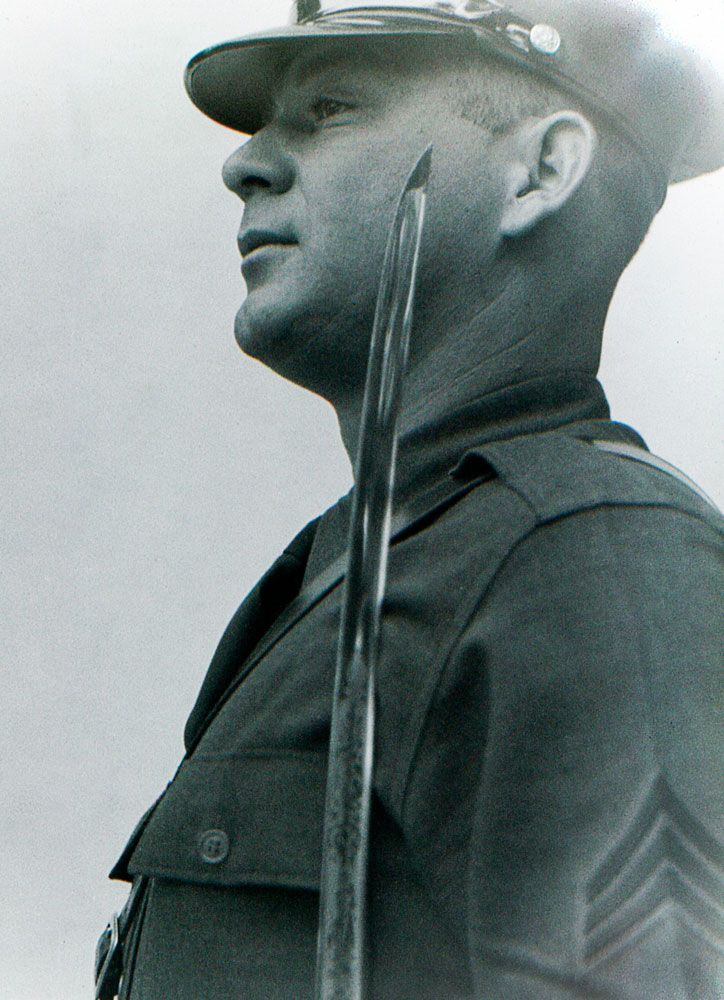
Flying Cadet 1941
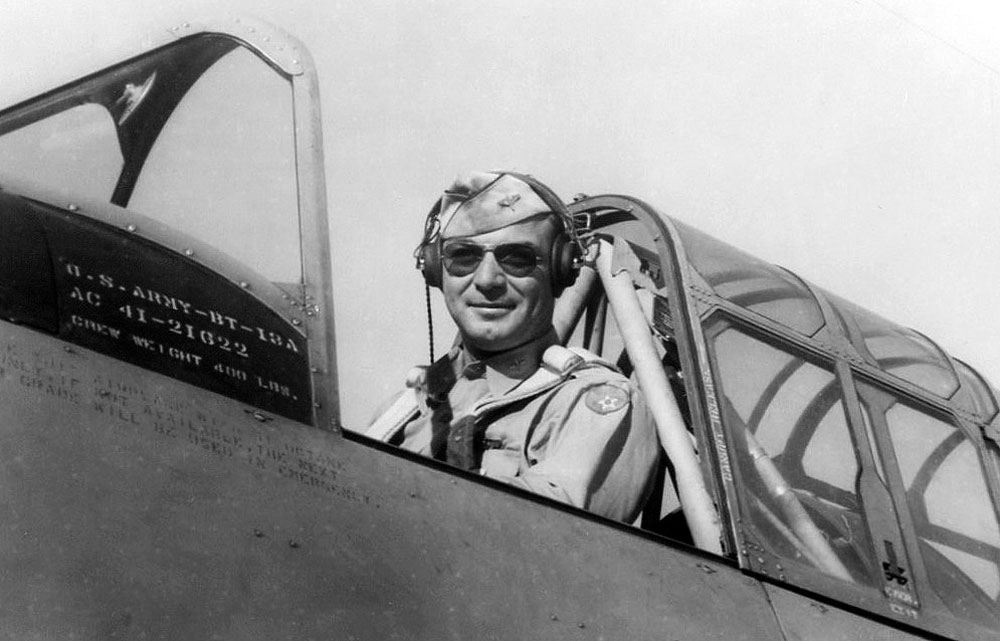
Flight Instructor BT-13A 1942
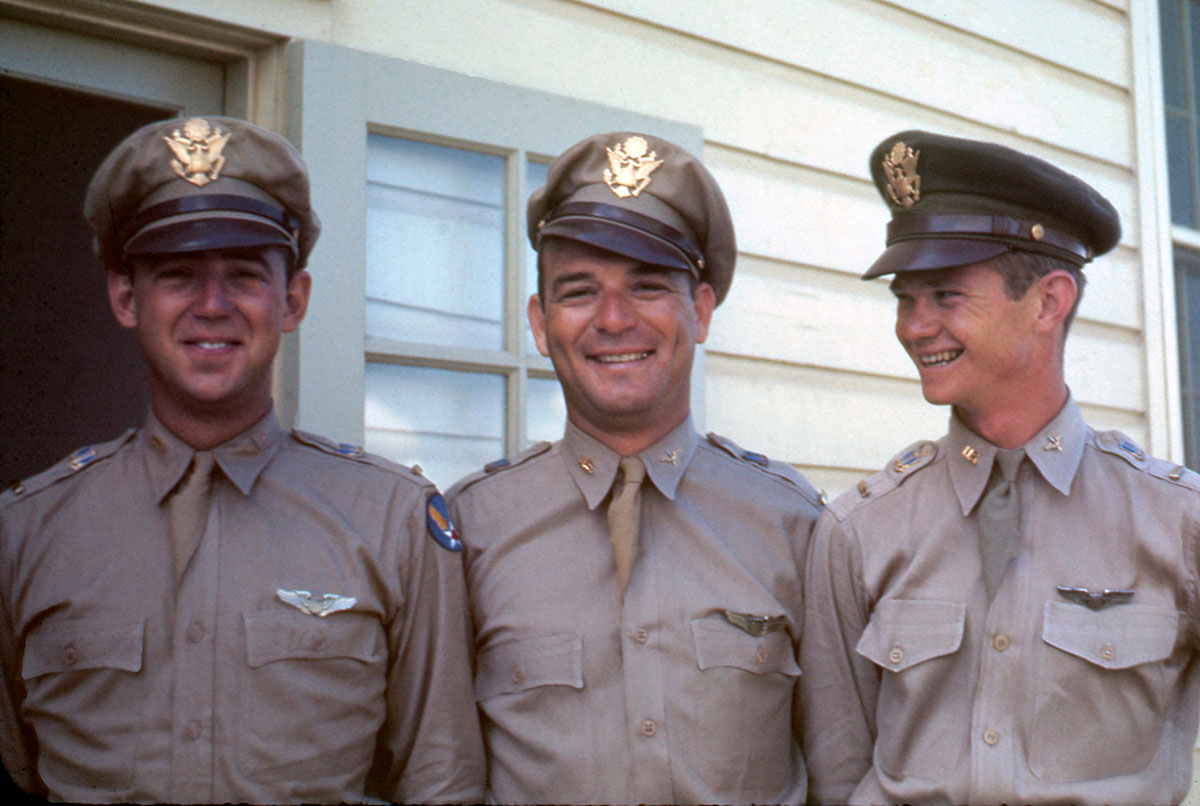
2nd Lt Alva C Murphy, 2nd Lt Atlee G Manthos, 2nd Lt Daniel A McKinnon, August 1942
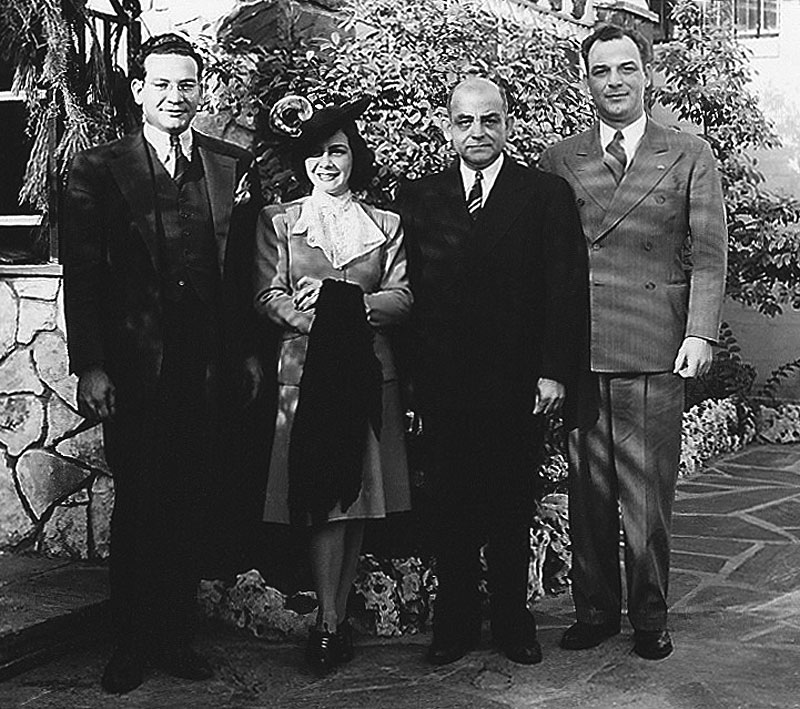
Atlee with his brother George, his sister Mary Olga, and Mike

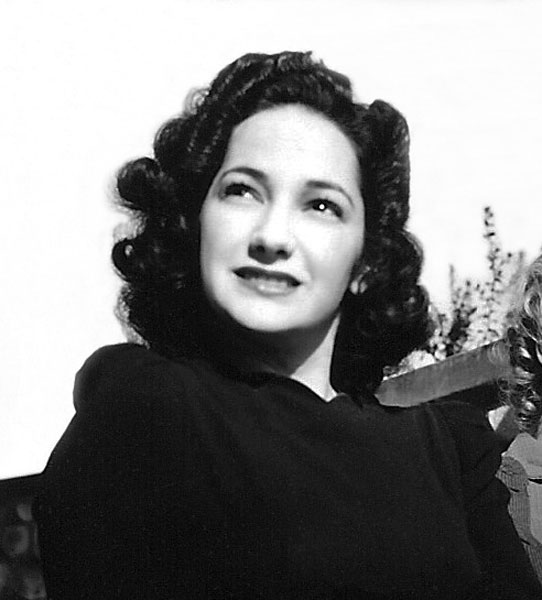
Alois Halbardier Mary Alice Judd Manthos
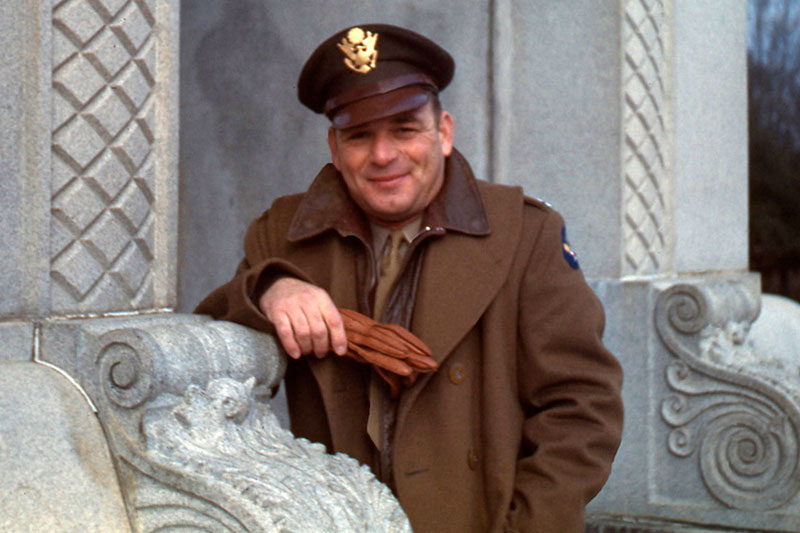
Houston Jan 1944
In June of 1944 the three friends boarded a ship for England and the "Mighty" Eighth Air Force to train for duty flying bomber escort and ground support missions. Atlee was assigned to the 496th Fighter Training Group in Goxhill and it's likely Murphy and McKinnon joined him there where they trained in early models of the P-51 Mustang. Below left is a picture of Atlee opening the "birdcage" canopy of a P-51B. The C7 on the fuselage is the code number for the 555th Fighter Training Squadron. In the second, he's in the cockpit of a P-51C.
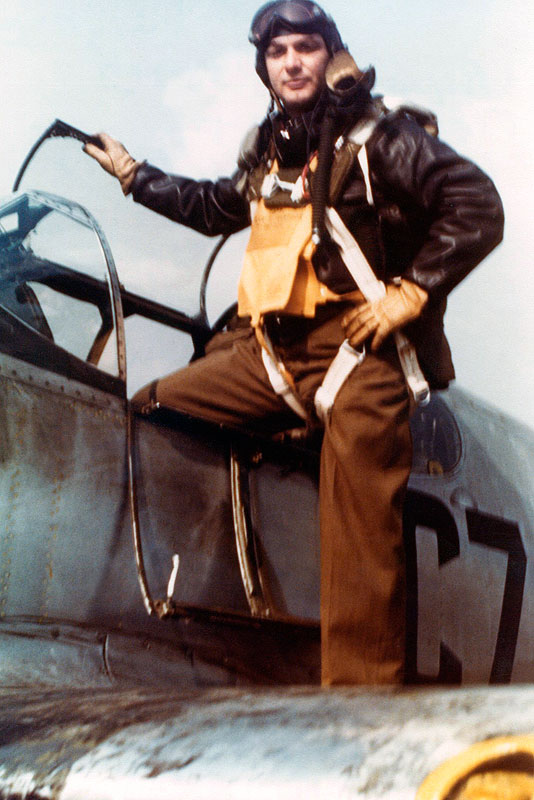
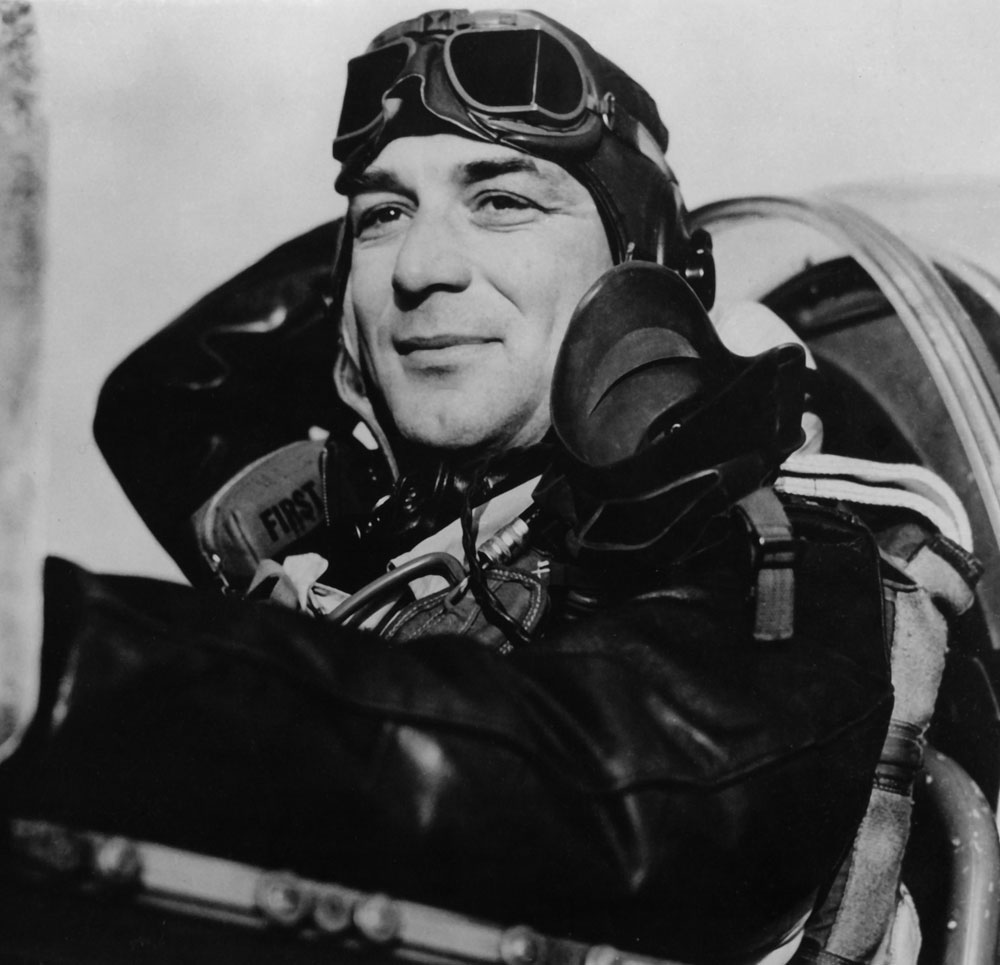
Daniel McKinnon was killed in action on 10 January 1945 over Vianden Luxembourg on the German border during the Battle of the Bulge. Alva Murphy, an ace with eight victories, was shot down by anti-aircraft fire while strafing an airfield near Rhuland Germany on 2 March 1945, just two months before the German High Command surrendered and the war in Europe came to an end.
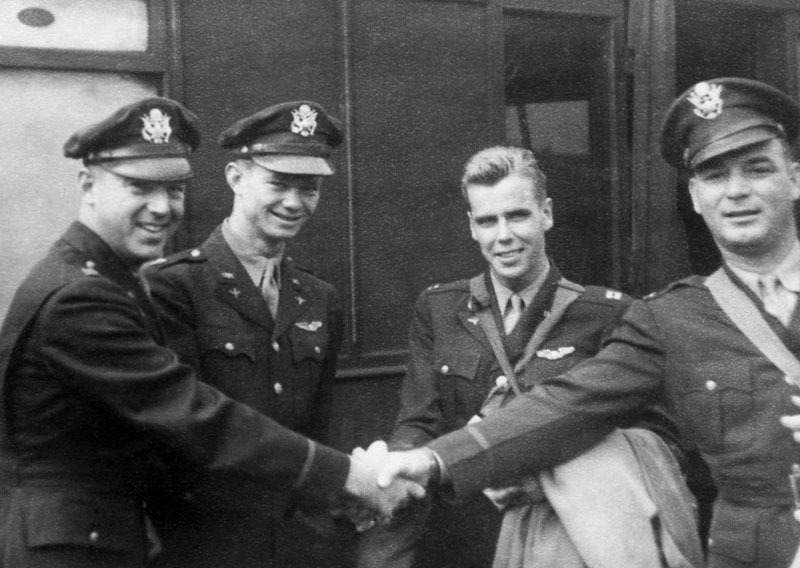
Captains Murphy, McKinnon, Brown, Manthos, Cambridge Station Aug 1944
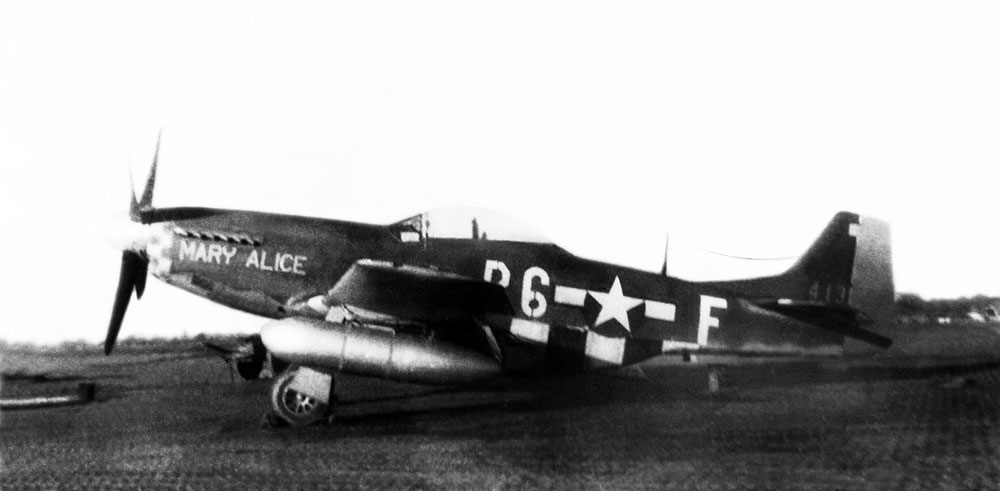
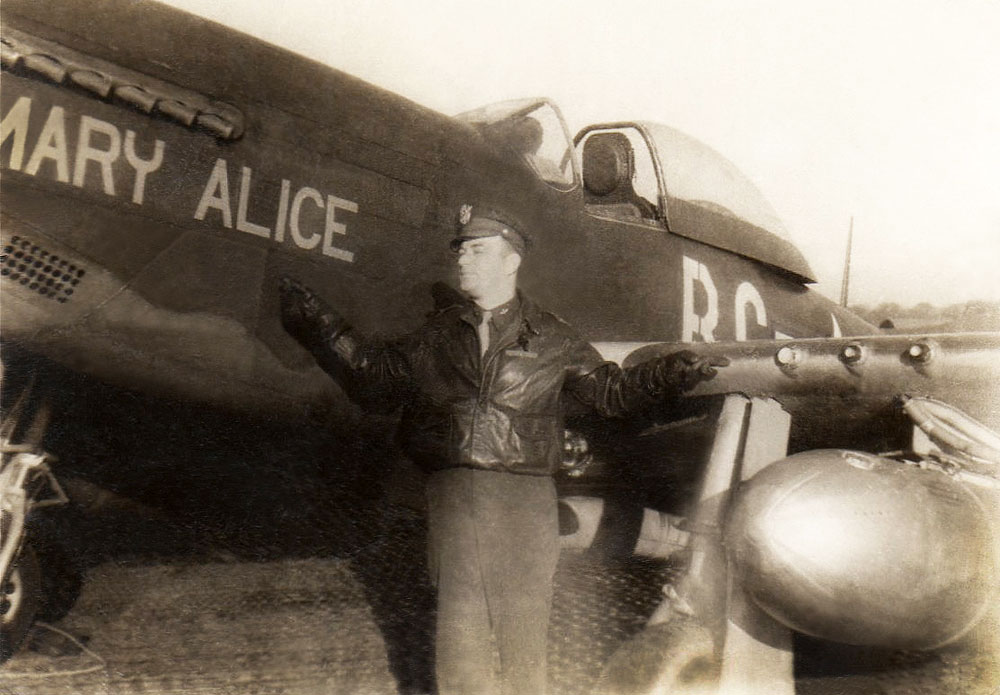
In any case, once he came to the 364th Pappy was assigned a new P-51D which he named Mary Alice II - Mad Pappy. He flew thirteen missions in Mary Alice II between 19 March and 8 May.
The second of the photographs below must have been taken after the war ended since it wasn't until 10 May that Pappy was promoted to major.
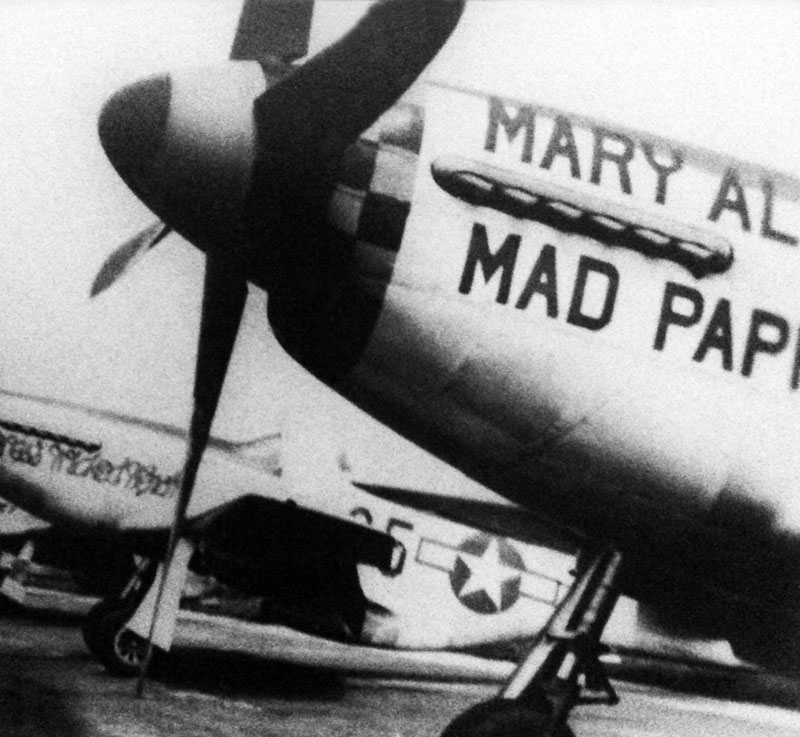
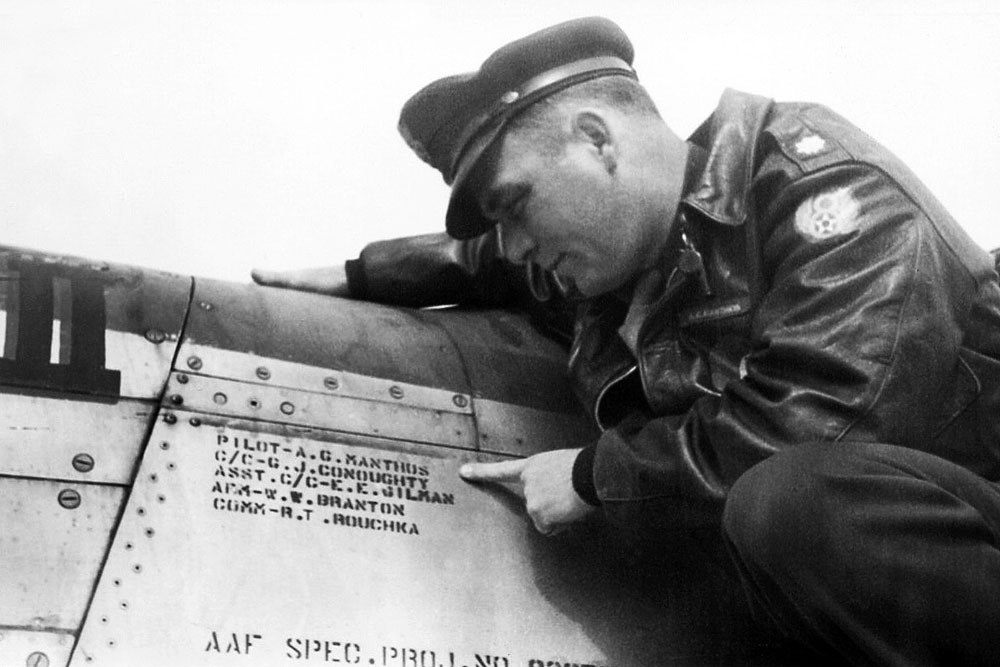
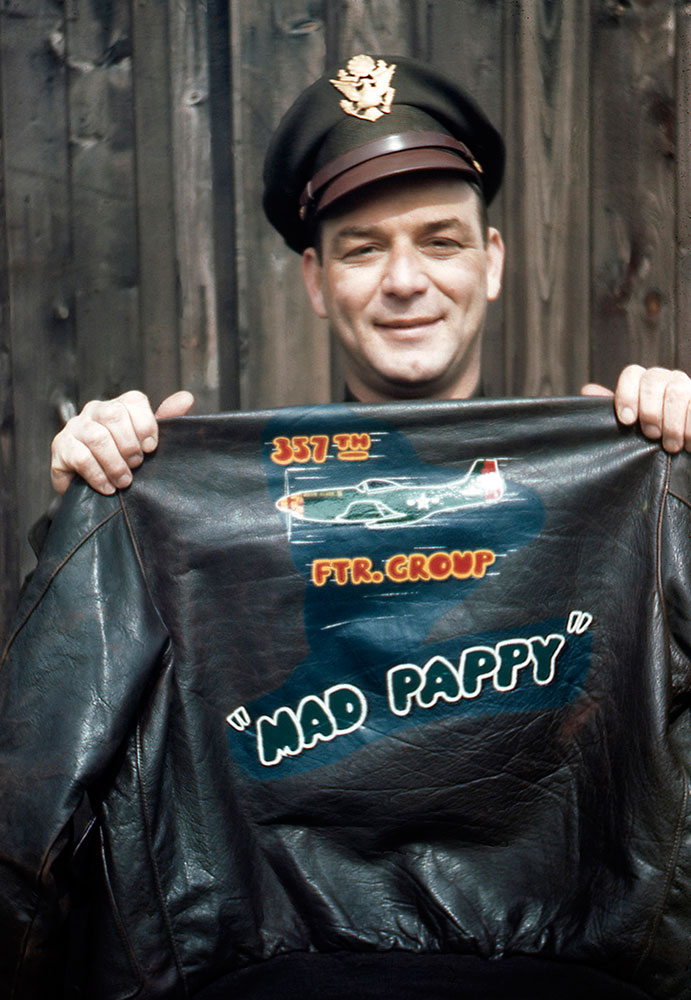
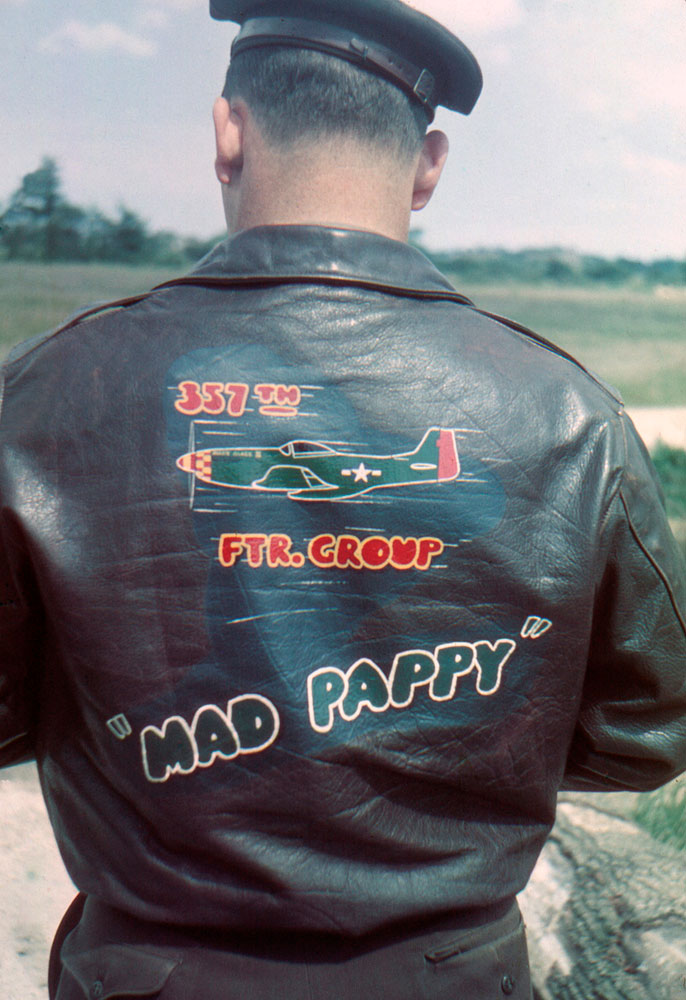

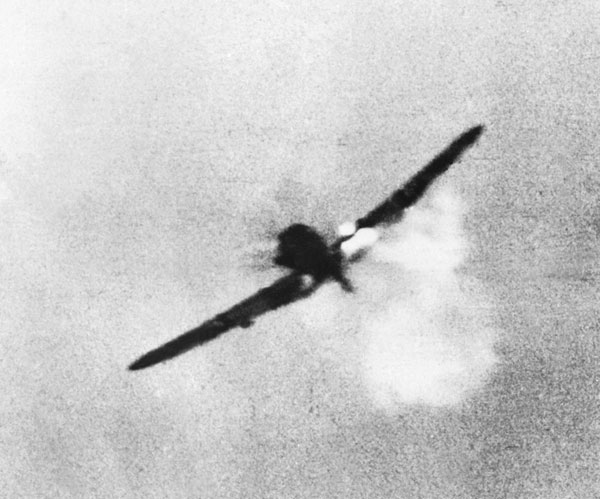
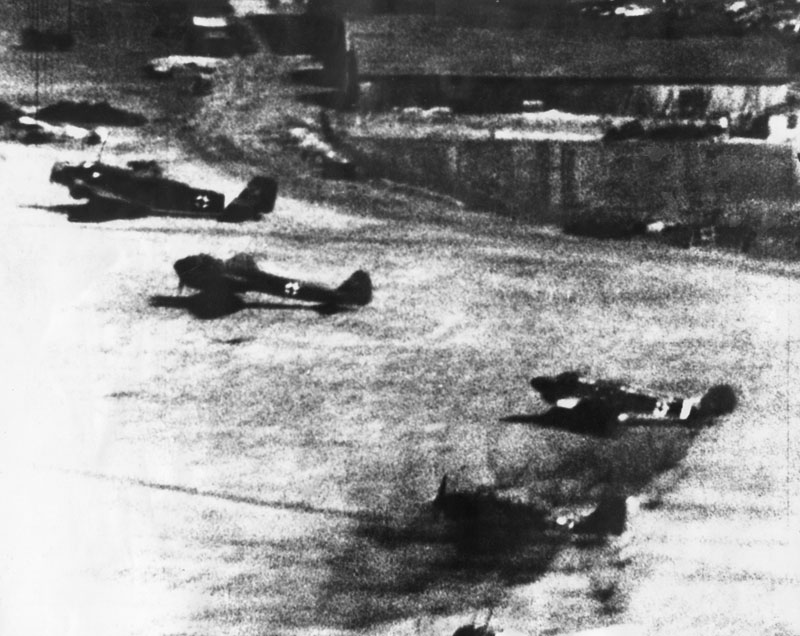
Two million American servicemen headed for home by any means available and as soon as possible. Pappy accepted reassignment to the 78th Fighter Group at Duxford as Operations Officer and remained in England until the end of 1945.
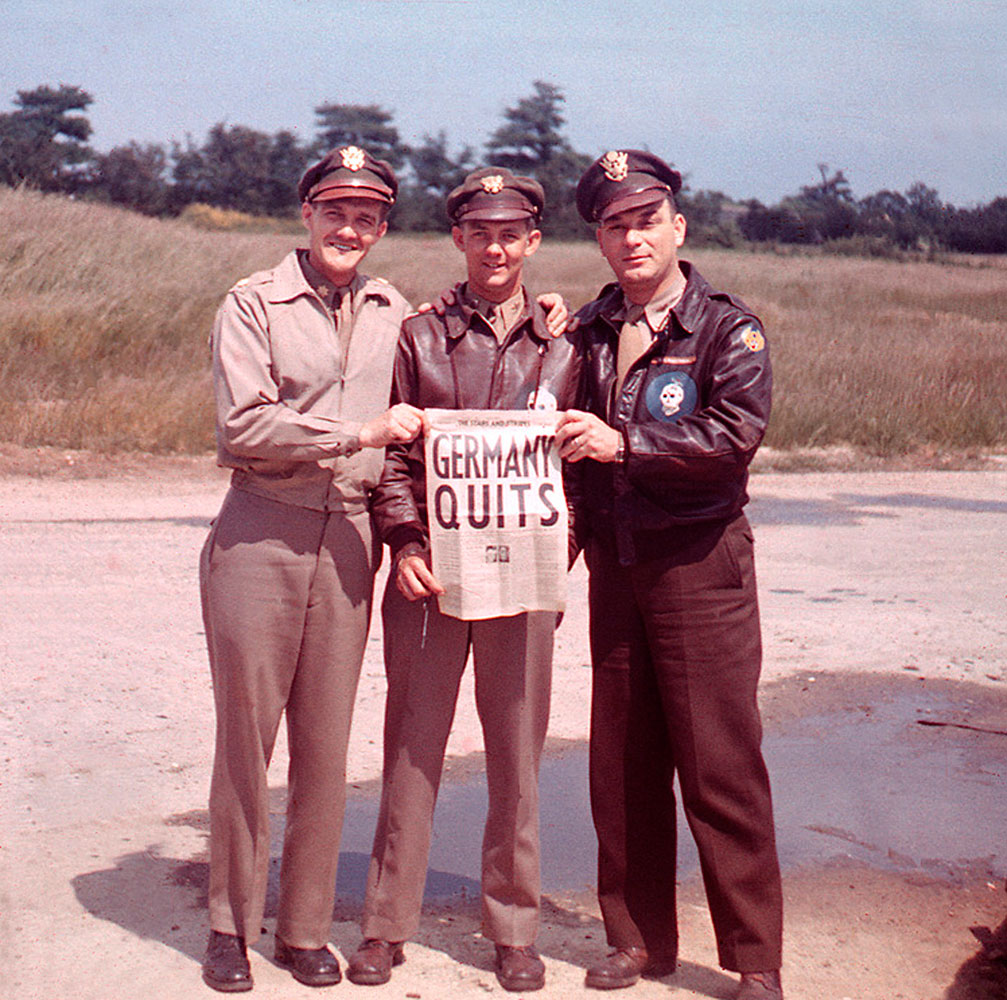
VE Day with 363rd squadron commander Maj Don Bochkay and unidentified 363rd pilot
His return to Texas in 1946 was not a particularly happy one. Within a year he was divorced, and the rewards of civilian life could not match the lure of the skies and the new generation of jet fighters. The price of his return to active duty was the loss of wartime rank, but he decided it was an arrangement he could live with and in July 1947 he left Mary Alice and petroleum geology to wear first lieutenant's bars in the new US Air Force, where he would spend the next 16 years of his life.
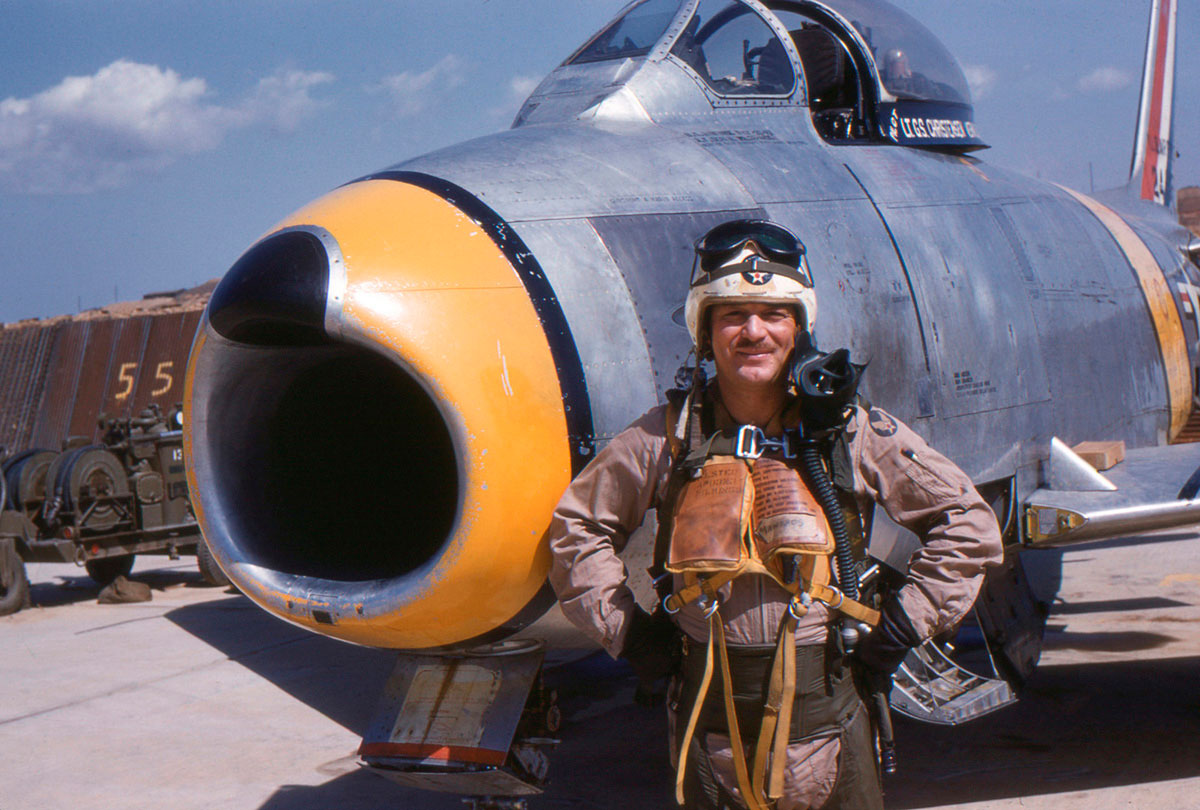
Lt Col Atlee G Manthos, USAF, retired
April 1963 as Command Pilot with 4300 flight hours. In May 1980 Pappy
died of cardiac arrest and was buried in Fort Collins Colorado.
POSTSCRIPT
In 2011 my brother Jeff and I were
contacted by a Greek engineer named Dimitrious Vassilopoulos, who was
working on a labor of love. His interest in aviation and history
had led him to write a book about Greek pilots who flew foreign fighter
aircraft during WWII and was looking for information about Pappy. We
were happy to oblige, and that led to something of an odyssey of
research during which we both learned a lot more about the old bastard
than we ever knew before, including some things he may not have known
about himself. The short biography above is a result of that effort.
The book was recently published and contains the wartime stories of ten Greek pilots who flew foreign fighters all over the world. It's written in Greek but the volume is filled with 46 stunning color plates by French aviation artist Gaetan Marie. Four of these aircraft profiles depict Mustangs flown by Pappy during his time with the 357th Fighter Group.
The book was recently published and contains the wartime stories of ten Greek pilots who flew foreign fighters all over the world. It's written in Greek but the volume is filled with 46 stunning color plates by French aviation artist Gaetan Marie. Four of these aircraft profiles depict Mustangs flown by Pappy during his time with the 357th Fighter Group.
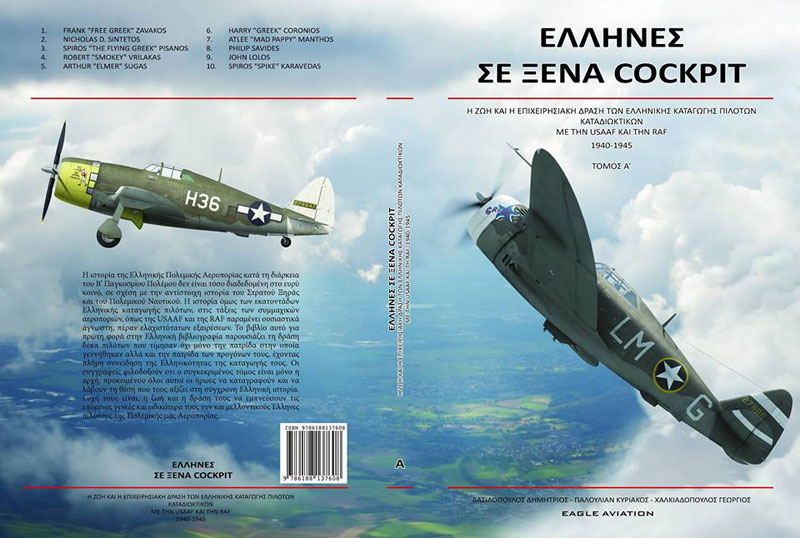
Greeks in Foreign Cockpits

P-51B
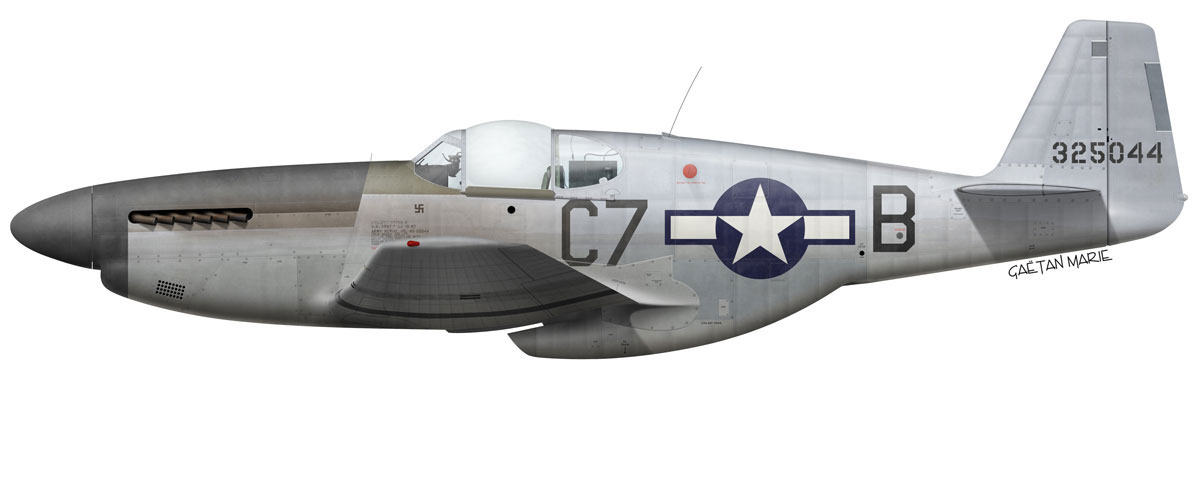
P-51C 555th Fighter Training Squadron
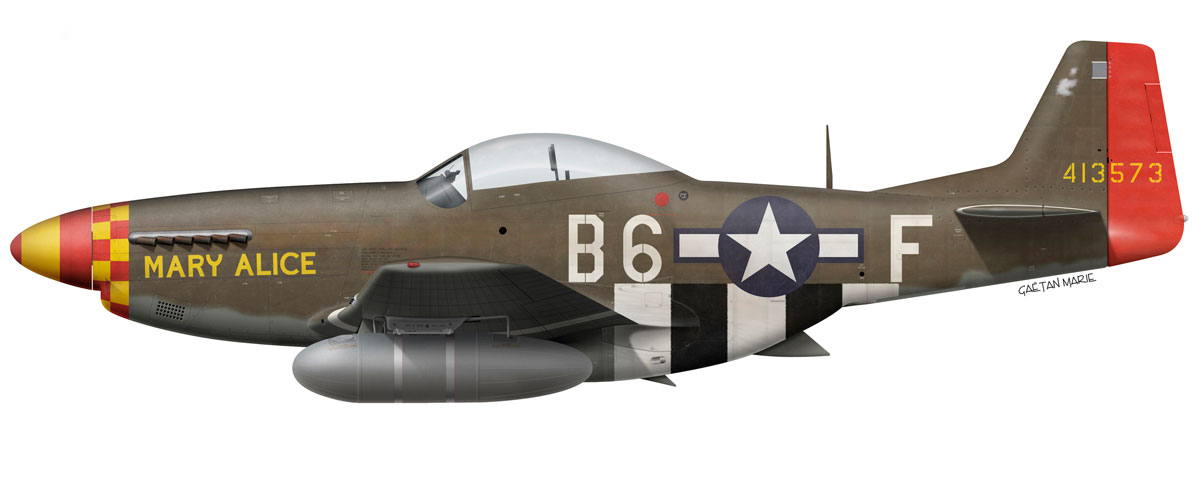
P-51D 44-13573 was previously flown under the name Isabel III by New Zealand RAF pilot Jack Clealand on temporary assignment to the 363rd Fighter Squadron
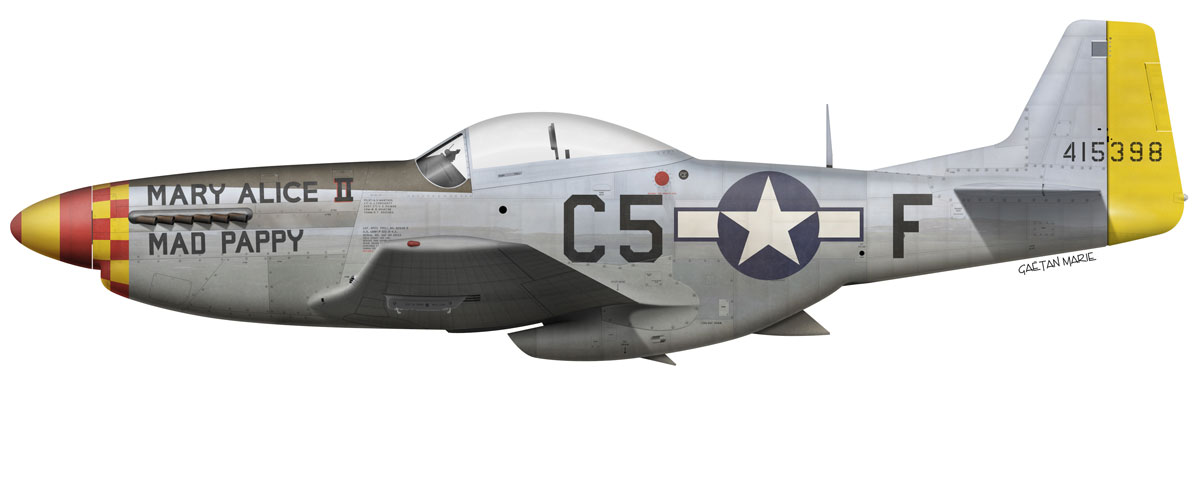
The individual code and frame number of Pappy's second P-51D are unknown, so this very pausible profile bears the 364th FS code and the same F designation Pappy had with Mary Alice.
And finally, along with the aircraft profiles of Gaetan Marie, the book contains 15 paintings of air combat scenes, 11 by Greek digital artist Andonis Karydis including this magnificent portrait of Pappy's encounter with a German Me262 on 19 Mar 1945
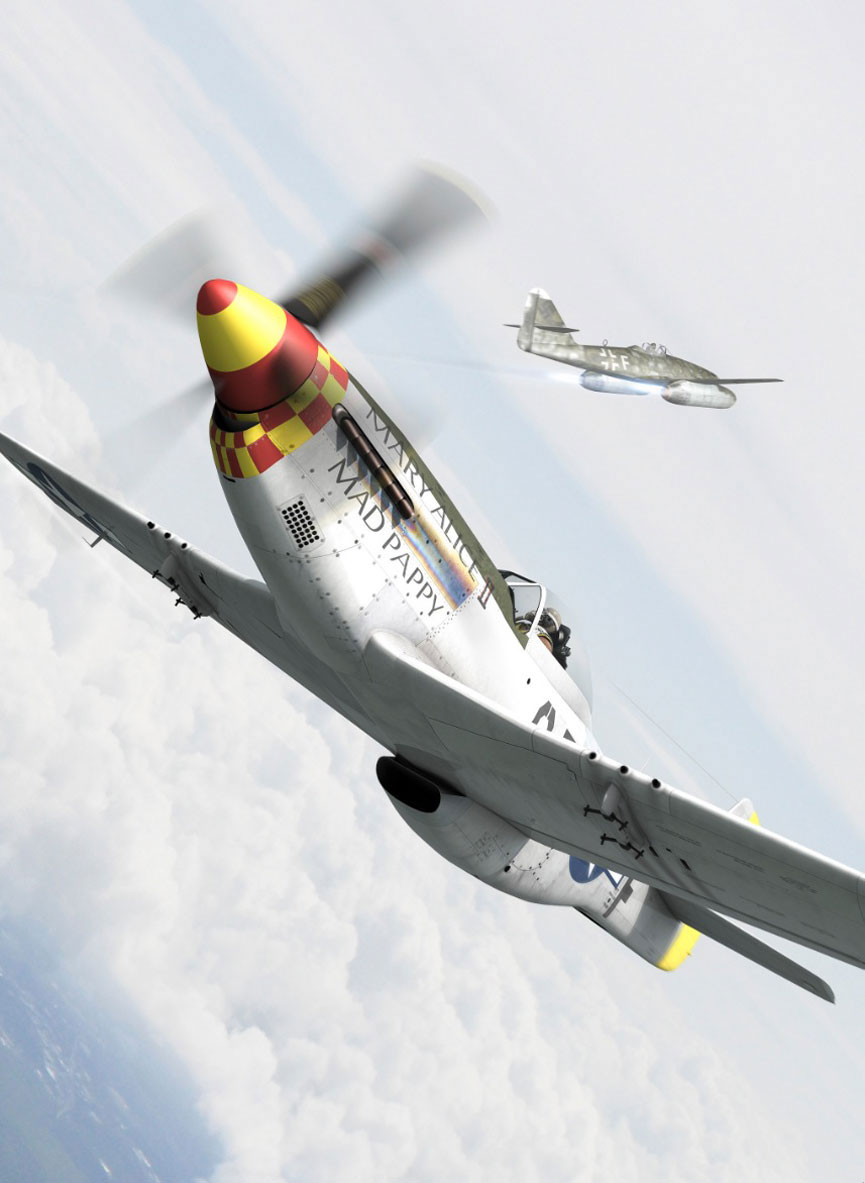
Hundreds of these artists' superb digital graphics can seen here:
GAETAN MARIE  |
ANDONIS KARYDIS 
|
PHOTO ARCHIVE OF LT COL ATLEE G MANTHOS USAF
Pappy took dozens of color slides between 1941 and 1949. Nearly all are pre or post-war and many quite mundane, but among them are what have proved to be some real treasures. These and other aircraft related images may be seen here:
